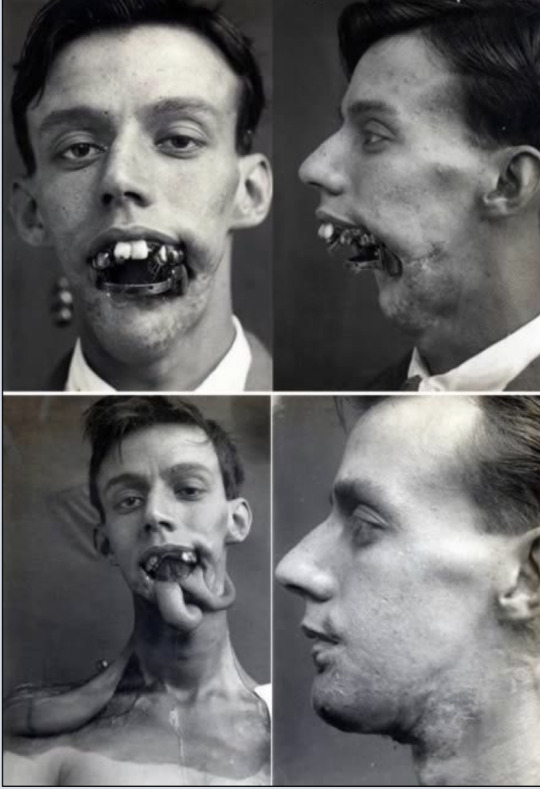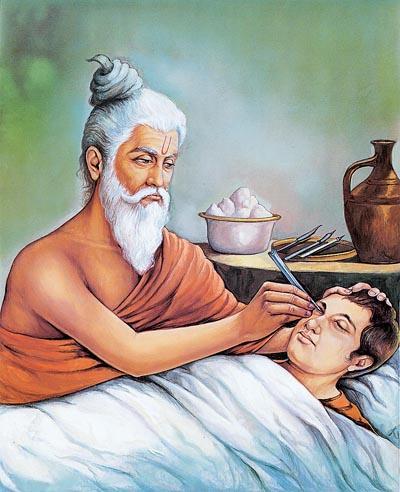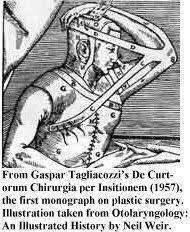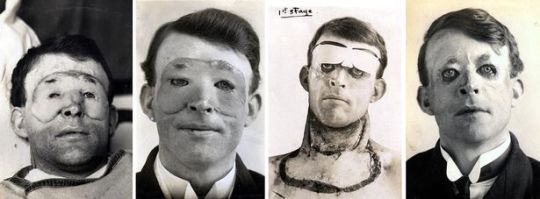Hi, my name is Astrid! Here in this blog I like to write all about skin and how modern technology can improve it.
Don't wanna be here? Send us removal request.
Text

Saw this photograph of a WWI soldier who underwent skin grafting with surgeon Harold Gillies and was fascinated with his recovery. It is incredible how Gillies grafting technique recuperated this soldiers face and is now able to feel like himself again!
5 notes
·
View notes
Text
Worst Ingredients A Product Could Have When Having Eczema
Introduction
After publishing a post about the best skincare products to use when having eczema, it provoked me to write about ingredients that should be avoided when having eczema. I hope this post spreads awareness and change someone's daily routine who might be irritating their skin without even knowing it.
Fragrance
The number one thing to avoid is fragrance since contains chemicals that causes skin aggravation. Although it is nice to use perfume, scented body wash or lotion, it irritates the skin and makes eczema worse. Always try to find skincare products that say fragrance-free to avoid irritation. However, if you still want to smell good I recommend buying a roller perfume since you are able to control where the fragrance goes to.
Sodium Lauryl Sulfate
Sulfates are no good when it comes to your body. I always avoid skincare that has sulfates, specifically sodium lauryl sulfate. This sulfate has been proven to irritate and penetrate into the skin[1]. Now, imagine that with someone who has a weak skin barrier, A.K.A someone with eczema. This sulfate will just make your eczema worse and it best to avoid it as much as possible.
Retinoids
Although retinoids help with acne, they also cause eczema flare ups. When using retinoids on normal skin, they sometimes have side effects such as scaling, redness, irritation, and itching [2] These side effects are the exact same effects people with eczema have, which is why it should be avoided. An alternative can be retinols since they are not as strong as retinoids.
These are some of the products that I avoid in order to avoid eczema flare-ups. Hopefully I have helped you choose some products to take care of your eczema and which ones to avoid!
1: https://medicine.uq.edu.au/article/2019/12/what-sodium-lauryl-sulfate-and-it-safe-use
2: https://nationaleczema.org/blog/blog-retinol-and-eczema/
1 note
·
View note
Text
Best Skin Care Products to Use When Having Eczema
With summer bringing in temperatures as high as 100 degrees, my eczema can't help but get irritated. Since I got eczema recently, it has been hard to find good products to use to avoid such irritation in the heat and for everyday wear. In this post I will be talking about non prescribed products that have helped my eczema clear up!
1.) Kiehls Ultra Facial Cream with Squalane ($45.00)


Before I start talking about the many benefits about this cream, I would like to point out the symbol at the bottom left. This is a MAJOR thing to look out for when shopping for eczema-prone skin. This symbol helps consumers know that it is safe to use on eczema. I always make sure to check boxes before buying facial products to make sure none of the ingredients would irritate my eczema.
This was the first product I used when I got eczema and was not prescribed any type of cream for it. Although it says it is a facial cream, it is also safe to use it on other places such as arms or legs. The reason why this is a great cream to use for eczema is because it contains 10.5% squalane. Squalane contains anti-inflammatory properties and reduces redness [1]. It is also a lightweight cream that does not clog your pores, which is good when it is meant to be applied overnight. Overall since it is a rehydrating mask, it takes away the flakiness of the skin and leaves it smoother by the next morning. This cream is also paraben-free and fragrance-free which is the number one thing to look at when buying skin creams.
2. Dove Deep Moisture Body Wash ($8.99)

Before, I would always pick out body washes that had the best scents. However, when I got eczema, I started to realize that the fragrance was making my eczema even more inflammated and dry. Fragrance is one of the worst things you can use on eczema-prone skin. That is why switching body washes is a major step to improving eczema! My personal favorite is the Dove Deep Moisture Body wash since it is fragrance free and sulfate free which hydrates the skin with each wash and avoids any dryness. It is also the #1 dermatologist recommended body wash brand [2].
3.) Cerave Healing Ointment ($19.99)


The image above shows how the Cerave Healing Ointment has improved someone's eczema under their eyes.
Since I struggle with eczema on the corners of my eyes, this ointment has been a life-saver. I saw improvements of my eczema overnight! The reason why this ointment works wonders is because it has ceramides that renew the skin's barrier and hyaluronic acid for hydration. I use this ointment around my eyes and sometimes lips overnight and wake up with hydrated skin.
I would like to also mention that Cerave is an overall great brand for someone who has eczema. Each product is developed with dermatologists, fragrance-free, and is gentle on the skin. I would like to mention their Foaming Facial Cleanser since I use it every night and leaves my skin clean and hydrated. This brand is perfect when trying to find products to relieve eczema.
4.) Aquaphor Lip Repair ($4.29)

This is probably my most frequently used thing I use compared to everything on this list. Since eczema has targeted my lips the most, I always need something hydrating to relieve the painful cracks, which Aquaphor Lip Repair always does. I tried to use the regular Aquaphor Healing Ointment on my lips and Vaseline, but it did not compare to the results I had with the Lip Repair. I do not recommend the Aquaphor Healing Ointment when outside because it does not contain any SPF compared to the Lip Repair. This can be damaging to someone who has eczema on the lips since hot weather is already damaging enough.
These are my top 4 products I swear by coming from someone who has eczema. I have noticed a great difference from using these products consistently. I hope this post is helpful to people who got eczema recently and are looking for products to improve any dryness, inflammation, or redness.
1: https://health.clevelandclinic.org/squalane/#:~:text=It%27s%20noncomedogenic%20so%20it%20won,other%20skin%20conditions%20like%20eczema.
2: https://www.dove.com/us/en/p/deep-moisture-body-wash.html/00011111124257#:~:text=This%20nourishing%20body%20wash%20is,regenerates%20your%20skin%27s%20natural%20moisture.
2 notes
·
View notes
Text
Continuity and Change in Plastic Surgery
Plastic surgery has had many different connotations throughout the years. In its early stages it was seen more as to fix defects and amputations. In today's times, it is seen as a luxury. The changes plastic surgery has endured have been many and now serves multiple purposes.
Ancient Rome
The very beginning of plastic surgery began in ancient Rome in 1 BC. Since Romans would constantly be at war, they needed surgeries for amputations and wounds that cannot be self-healed. They would normally conduct surgical procedures on gladiators who had their noses and ears amputated. During this time, ancient Romans had different views and beliefs and would therefore conduct surgeries to supposedly correct them. In this time they mainly focused on circumcision removals. An encyclopedist named Aulus Conrelius Celsus would further explain this surgery and others such as breast reductions and a blepharoplasty (excess skin removed from the eyes) in a text named 'De re medicina'.[1].
Fathers of Plastic Surgery
The advancements in plastic surgery developed in India around 800 BC. A physician named Sushruta had explored the causes of more than 1,100 diseases, used plants for medicine, and conducted plenty of surgical procedures such as the "Indian Method"[2], also known as the forehead flap rhinoplasty. In this surgery, Sushruta would use the tissues from the forehead and used them for nose reconstruction. He used more than 125 surgical tools to conduct the forehead flap rhinoplasty which included "dilators, catheters, and syringes"[3]. The forehead flap rhinoplasties were common because many would lose their nose due to penalization of crimes such as theft from India. Sushruta helped fix the nasal problems people had and carried on to do other procedures such as lobuloplasties and otoplasties.

Here is Sushruta conducting a surgery on one of his patients
Fast foward to the 1500s, another "father of plastic surgery" arose [4]. He was an Italian man named Gaspare Tagliacozzi. He established the "Italian Method" in rhinoplasties which was him cutting a flap of skin from the bicep and fully removing it and adding it onto the nose.

In this photo it shows Gaspare Tagliacozzi's method of rhinoplasties.
These two plastic surgery pioneers had similar methods of removal and used it to develop a practice that would change the field of surgery.
Plastic Surgery's Impact on War
During times of war, many soldiers lose fingers, noses, ears, lips, and so many more features due to artillery. Fortunately, plastic surgery helps those soldiers better or even fully heal the wounds they have. The reconstruction of body parts has helped veterans be themselves again and do tasks they were not able to preform before.
World War I
Around the early 19th century, World War I broke out. Over 21 million soldiers were wounded by things such as machine guns and trench warfare and most needed surgery in order to live. The sudden emergence of plastic surgery arose when veterans were needing facial reconstruction such as for their jaw injuries that would not let them eat or drink. A doctor named Harold Gillies was the first to experiment with plastic surgery during the war on his patients in his hospital, The Queen's Hospital. Dr. Gillies began to test out "...basic skin and bone grafts in his attempts to repair the shattered jaws of soldiers who had taken bullets or shrapnel to their faces"[5]. Gillies curiosity of plastic surgery further progressed when he observed Hippolyte Morestin, a maxillofacial surgeon, and began to focus on the entire face rather than the jaw. His first major surgery was on a man named Walter Yeo, a sailor that was wounded while fighting Battle of Jutland. Gillies normalized facial surgeries among the medical world because of this war and because of him plastic surgery became a frequent practice for veterans in need.

Here in these pictures Yeo had gotten a flap surgery and a skin transplant.
World War II
Because of the positive impact plastic surgery had on veterans in WWI, it was used and developed more in World War II (WWII). Doctors had to quickly adjust to new surgeries that help correct disfigured burns. One doctor in particular named Dr. Archibald McIndoe was the Harold Gillies of this war who helped many of his patients, also known as the "Guinea Pig Club" [6],repair the severe injuries. However, it wasn't the technique of his surgery that made him a remarkable doctor, it was his form of talking to his patients. Dr. Mclndoe would try to uplift his patient's self esteem by telling them their alterations do not make them any less of a person and would bring 'showgirls' [7] to have conversations with them to make them feel confident. Not only were faces repaired, but so were eyes. At Valley Forge Hospital, they started to develop artificial eyes. These eyes were made up of acrylic which look highly realistic. This helped veterans have their old face and confidence back.
After using plastic surgery for necessary and urgent injuries, the practice began to expand into unnecessary uses. After WWII, Japan escorts began to inject silicone straight into their breasts. After this event, many others began to use plastic surgery for luxury reasons and needless body modifications.
The Era of Real Plastic
After using plastic surgery for defects and injuries, it began to expand into further developments. With the help of silicone, people began to use them for selfish needs. The first silicone implant was invented by Thomas Cronin in 1962 and was used for a breast augmentation on Timmie Jean Lindsey in 1964. This surgery added a whole new meaning towards the words "plastic surgery" and began to spread like wildfire. Celebrities and the rich began to use these surgeries to better their appearance in order to stay famous or to just have more confidence. The new connotation of plastic surgery made lavishness resonate with the medical world and established a very successful industry.

Throughout the late 20th and early 21st century, Micheal Jackson has been getting aesthetic surgical procedures to his nose. He has denied most allegations about facial surgeries, but has admitted to 2 rhinoplasties [10]
Present Day Surgeries
Today, the image people think of when plastic surgery is mentioned are mostly vain procedures such as Brazilian Butt Lifts, rhinoplasties, breast implants, lip fillers, etc. Plastic surgery began to be normalized for body or alterations so much that now "...around 1.6 million [plastic surgery] procedures in 1997 to over 5.5 million in 2020 [in the past decade]"[8]. Most singers, actors, and even models have been under the knife to keep their appearance or to appear more exotic. To go more into depth, Bella Hadid has had surgical procedures such as a rhinoplasty at 14 [9]. The common appearance of celebrities with plastic surgery influenced more classes to get into it. For example, the middle class became involved in small operations and are now common to be seen doing non-surgical procedures such as botox. Although plastic surgery is still meant to help correct defects and injuries, the connotation and flashes people get when plastic surgery is mentioned has changed and is now seen as something lush most get.

In this before and after picture of Bella Hadid, you could notice the change of her nose due to a rounder tip, a smoother nose bridge, and an overall thinner nose.
The Influence of Plastic Surgery
As more and more surgical procedures were used and documented by ancient Egyptians, 16th century Italians, and wars, the procedures began to be used globally. Many countries began to use the surgical knowledge and further develop it to treat other injuries and needs. This industry has positively helped alter the lives of many and has made a forever impact one's confidence. Today, there are more than 15 million plastic surgeries which are now fully sanitary, handled by professionals, and most importantly, a safe procedure.
[1]: https://www.capegazette.com/node/69868
[2]https://journals.lww.com/annalsplasticsurgery/Abstract/2014/07000/Sushruta__Father_of_Plastic_Surgery.2.aspx#:~:text=Because%20of%20his%20seminal%20contributions,method.%E2%80%9D%20He%20was%20born%20sometime
[3]: (https://pubmed.ncbi.nlm.nih.gov/23133066/)
[4]: https://www.kirbyplasticsurgery.com/blog/plastic-surgery-history-wartime/
[5]: https://www.warhistoryonline.com/history/the-origin-of-plastic-surgery.html?safari=1
[6]: https://www.kirbyplasticsurgery.com/blog/plastic-surgery-history-wartime/
[7]: https://www.kirbyplasticsurgery.com/blog/plastic-surgery-history-wartime/
[8]: https://www.statista.com/topics/3734/cosmetic-surgery/
[9]: https://www.elle.com/uk/life-and-culture/culture/a39438874/bella-hadid-admits-to-the-surgery-she-had-at-14-including-a-nose-job/
[10]: https://abcnews.go.com/2020/MichaelJackson/story?id=7982236&page=1
25 notes
·
View notes